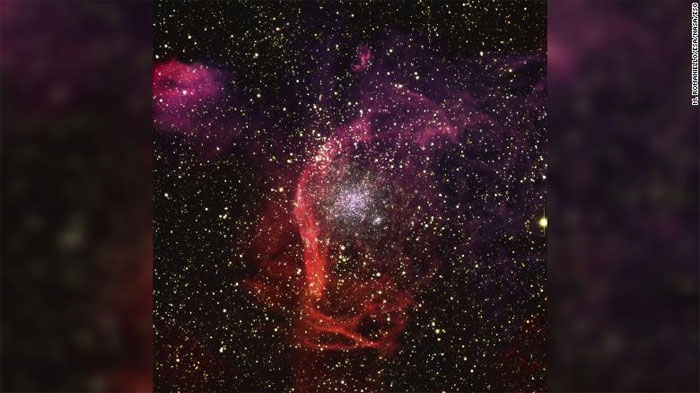A Newly Discovered Black Hole Hides in the Large Magellanic Cloud, a Satellite Galaxy of the Milky Way.
The newly discovered black hole is located 160,000 light-years from Earth and has a mass 11 times that of the Sun. Astronomers found this black hole using the Very Large Telescope (VLT) at the European Southern Observatory in Chile.

A cosmic black hole and a star orbiting the black hole. (Image: ESO/M. Kornmesser).
Astronomers have observed how the black hole’s gravity affects the motion of a nearby star, which has a mass five times that of the Sun.
This is the first time this method of detecting black holes has been used, and it could help researchers find other hidden black holes in the Milky Way as well as in other galaxies throughout the universe.
The discovery of the black hole in the Large Magellanic Cloud has been published in the Monthly Notices of the Royal Astronomical Society.

NGC1850, a double star cluster and super star cluster in the Dorado constellation, part of the Large Magellanic Cloud, where the new black hole was discovered. (Image: ESO/M. Kornmesser)
“Similar to Sherlock Holmes tracking a criminal gang from their missteps, we are like detectives examining each star in this cluster in an effort to find some evidence of the presence of a black hole without directly seeing them,” said lead researcher Sara Saracino.
Sara Saracino is a member of the engineering and technology department at the Astrophysics Research Institute of Liverpool John Moores University in the UK.
“The results here represent just one of the wanted criminals, but once you find one, you are on a journey to discover many more in different clusters,” the researcher shared.
Although cosmic black holes are difficult to detect, they tend to reveal their presence through X-rays emitted when they consume surrounding matter, creating gravitational waves when they collide or interact with neutron stars.
The discovery of the black hole in the Large Magellanic Cloud marks the first time astronomers have found a young black hole in a young star cluster, approximately 100 million years old, which is considered an early stage compared to the rest of the universe.
In the future, astronomers may use this method to search for other young black holes in the universe to understand their evolution and compare them with larger black holes in older star clusters to see how black holes grow over time.


















































